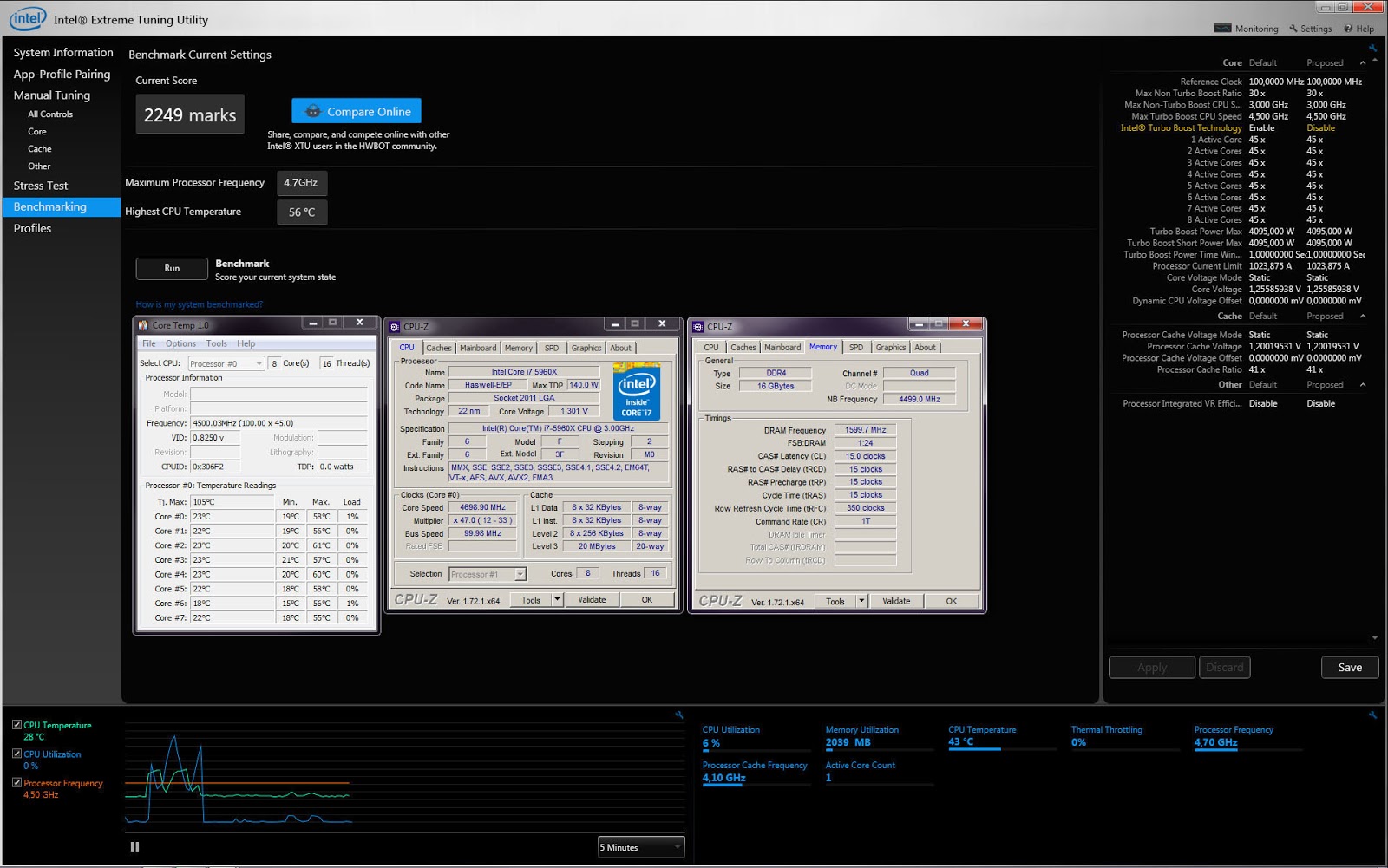

- #Intel extreme tuning utility benchmark score i6700k install#
- #Intel extreme tuning utility benchmark score i6700k update#
- #Intel extreme tuning utility benchmark score i6700k windows 10#
- #Intel extreme tuning utility benchmark score i6700k pro#
The new system is about 10-20% faster than the old system, from a CPU and memory perspective, depending on which benchmark you choose. Keep in mind, that beyond enabling XMP 2.1, I have not overclocked the new system yet. 5, and 6 below:įigure 4: CPU-Z CPU Tab for Z170 Core i7-6700K Systemįigure 5: CPU-Z Bench Tab for Z170 Core i7-6700K Systemįigure 6: Geekbench 3.3.2 Scores for Z170 Core i7-6700K System The basic information and scores for the new system is shown in Figures 4. So far, I have benchmarked the new system using CPU-Z and Geekbench 3.3.2. I will benchmark using those drivers, and then compare the results to the native Intel NVMe drivers.
#Intel extreme tuning utility benchmark score i6700k windows 10#
Windows 10 recognized the Intel 750 using the default Microsoft NVMe drivers.
#Intel extreme tuning utility benchmark score i6700k update#
Then I used Windows and Microsoft Update to get Windows 10 fully patched.
#Intel extreme tuning utility benchmark score i6700k install#
Windows 10 Professional installed default drivers for the dual Intel 1GB NICs, so I was able to get on the internet and download and install all of the latest Windows 10 64-bit drivers for this motherboard from the ASRock web site. I made sure the Intel 750 was not installed yet, and then I used an old USB optical drive to install Windows 10 Professional on to the RAID 1 array.
#Intel extreme tuning utility benchmark score i6700k pro#
Next I created a RAID 1 array with my two 512GB Samsung 850 Pro SSDs, using the Intel RAID controller that is built-in to the Z170 chipset. I was able to flash the BIOS to 1.7 using the Instant Flash utility in the UEFI BIOS setup, and then I was able to use all four 16GB DDR4 RAM modules. One of the fixes listed for version 1.7 is “improve DRAM compatibility”.

Going into the UEFI BIOS setup, I discovered that my ASRock Z170 Extreme 7+ motherboard had the initial 1.4 BIOS, while the latest version was 1.7. I removed two of the 16GB DDR4 RAM modules, and powered it back up, and this time I got a POST. Looking this up in the motherboard manual, I discovered that this was a memory-related issue. Luckily, the ASRock motherboard has a built-in LED diagnostic display, which was showing a code 55 error. When I had it ready to turn on for the first time (without putting the case sides on, which is always bad luck), I was rewarded with the CPU and case fans spinning, but no visible POST or video output at all. I spent a couple of hours putting this system together, doing a pretty careful job with the cable management. But then again, I may not, since I want to reduce my power usage and have more PCIe lanes available for storage use. Initially, I’ll be using the Intel integrated graphics, but I may end up using an EVGA Geforce GTX 960 video card.


 0 kommentar(er)
0 kommentar(er)
